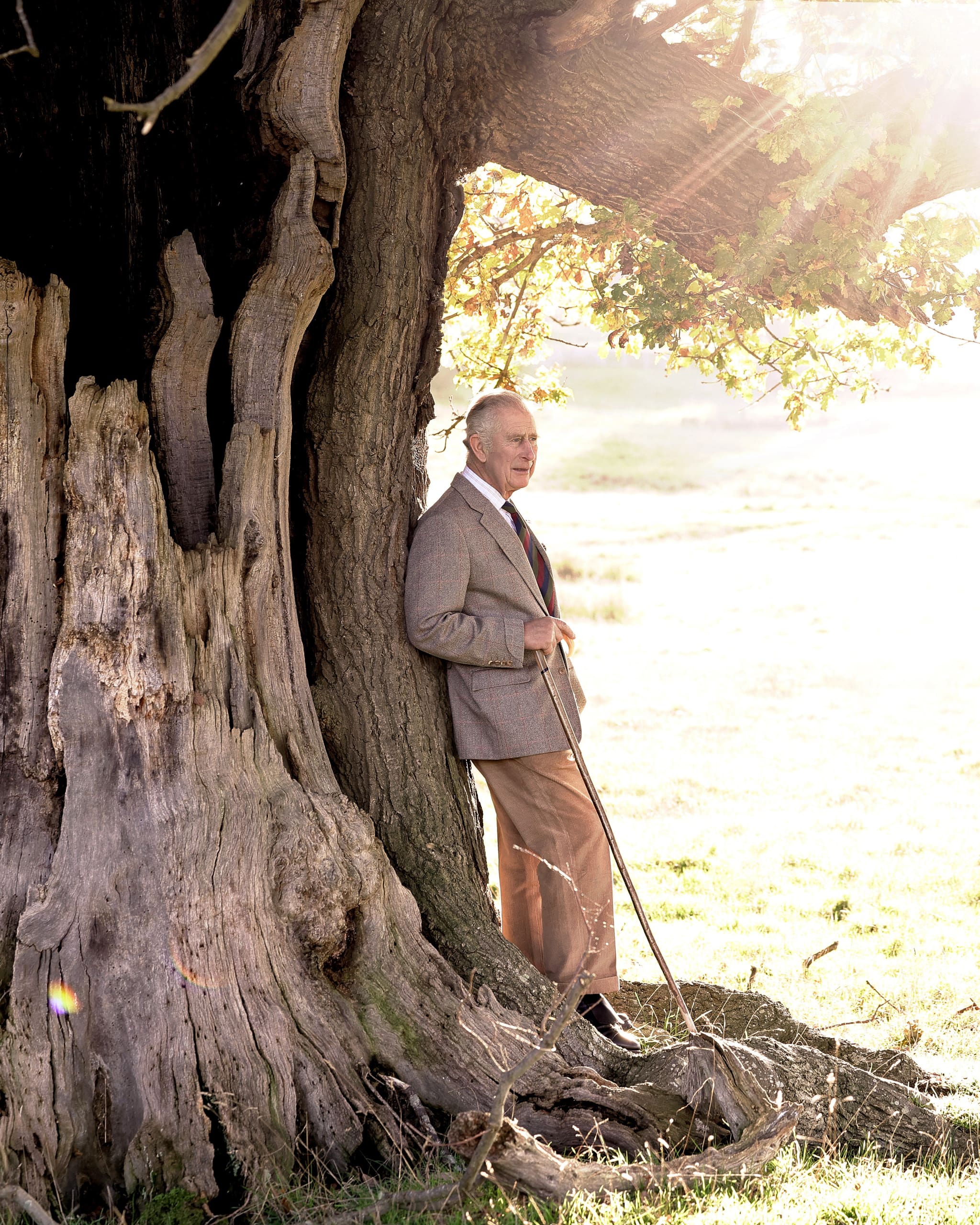Vogue’s Sarah Mower decodes all of the fashion highlights expected at tomorrow’s coronation.
The coronation of King Charles III and Queen Camilla on Saturday is set to be the largest spectacle of clothes, jewelry, and accessories Britain has put on in 70 years. Slimmed-down as the ceremony may be—with a mere 2000 guests, as opposed to the 8000 at Queen Elizabeth II’s 1954 coronation—it’s nevertheless going to be a full-on show of crowns, diamonds, golden regalia, and ritual velvet robes. As Charles’s mother famously put it: “We have to be seen to be believed.”
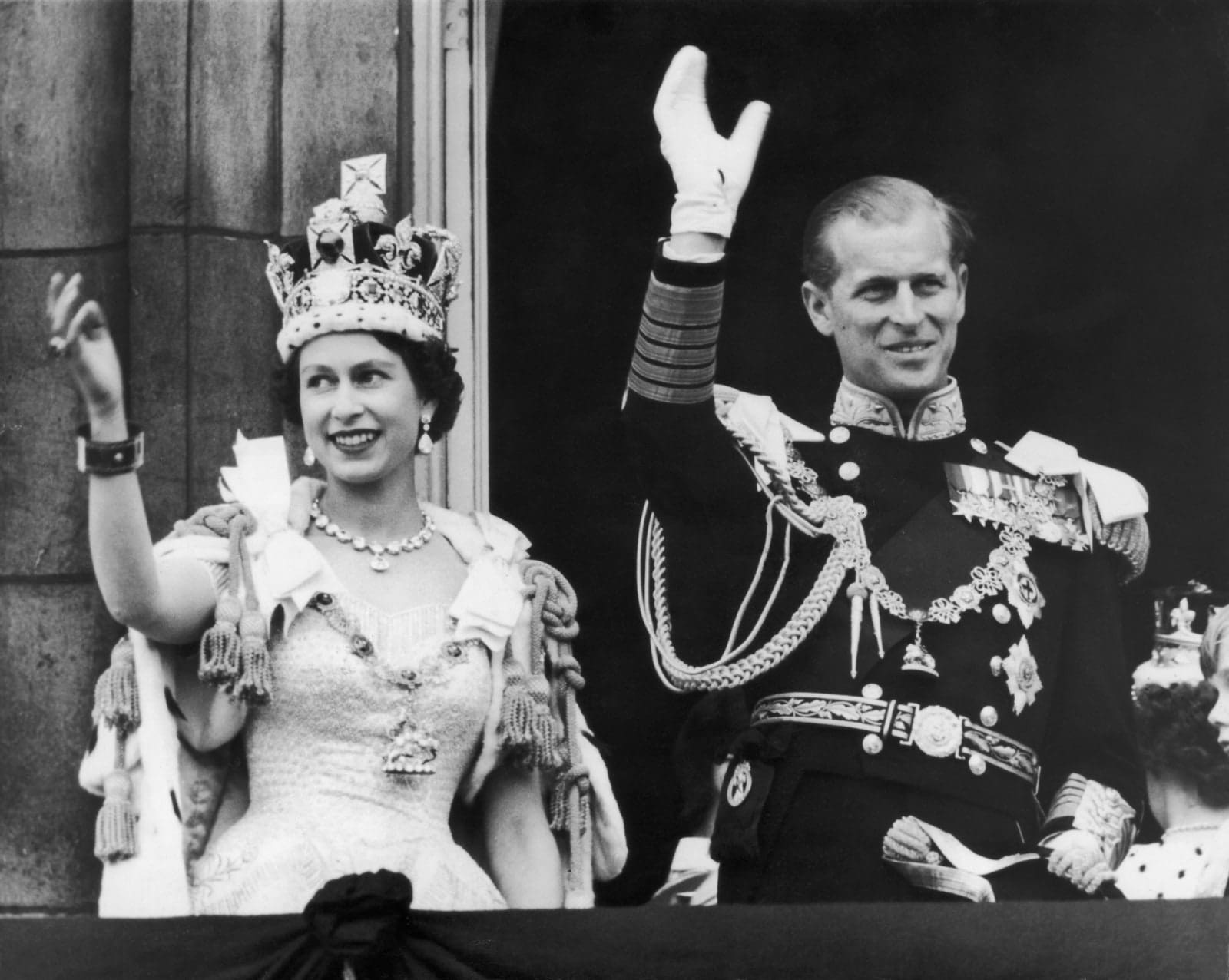
It might be assumed that every aspect of the crowning of a British monarch has been laid down from time immemorial. Well, yes and no. Buckingham Palace let it be known that “the ceremonies of the coronation are ancient, but they have been freshly interpreted for our contemporary world.” In truth, each successive King and Queen has made up parts of it as they go along. Sovereigns always want to firm up the tenor of their reigns—and their hopes for popularity—in the messaging of their coronations. And that holds true for the decisions Charles has made over what will be seen of his character and beliefs in how the coronation looks.
Everything has been meticulously planned to show what he cares about—and that goes for his choice of what each guest and participant in the day’s rituals represents. This will be the most ‘diverse’ coronation congregation yet: the first to involve Church of England women clergy (who were only accorded the right to ordination in 1994); to show female participants serving as high state officials; and to request Muslim, Hindu, Jewish, Sikh, Jain and Buddhist religious leaders to head up the ceremonial procession.

All eyes and cameras, however, will mainly be trained on the King and Queen dressed in all the finery of regal power. These dazzling costumes and props of royal theatre might have been kept hazily mysterious to the general public in the past—all part of the solemn mystique of the institution. Not now: Charles has an extreme interest in letting people know about the clothes and regalia, crediting who made or repaired them and where the materials originated. He’s ensured that extraordinarily detailed information has been flowing across the royal Instagram, and in streams from Buckingham Palace press office. To a fashion person, it’s almost been like reading haute couture fashion show press releases, written with a modern emphasis on traceability and craftsmanship.
To put it simply, Charles III stands for ‘vintage,’ ‘reuse,’ and ‘repair.’ In the past, monarchs customarily had new robes made for their coronations—no doubt signaling the fresh start of a new reign. Charles has broken with that tradition. “In the interests of sustainability and efficiency,” he’s chosen to wear coronation robes and accessories which were variously worn by King George IV in 1821, George V in 1911, George VI in 1937, and his mother in 1953. It’s put the royal restorers of the robe supplier Ede & Ravenscroft, the embroiderers of the Royal School of Needlework, and such specialists as the glove-makers Dent to endless hours of preparation. Camilla, however, will appear in new robes specifically created for her.
Meanwhile, the crown jewels—with the exception of the medieval gold anointing spoon—were made by Charles II in 1661. They’re not the originals—those were melted down at the Tower of London by Oliver Cromwell’s Parliamentarians after they’d chopped the head off Charles I. Camilla has chosen another piece from the royal collection: the 1911 Queen Mary Crown, but with certain adaptations designed to avert controversy over the Koh-i-Nur diamond.
Here’s a guide to what to watch out for tomorrow—down to the intricacies of every thread, fiber, and jewel that will be donned by the royal couple during the stages of the ceremony.
There will be many costume changes
The Robes of State are worn when the couple enters Westminster Abbey, and are made of crimson velvet. Charles is wearing his grandfather George VI’s, conserved by Ede & Ravenscroft and the Royal School of Needlework. It is four-and-a-half meters long. Queen Consort Camilla will wear the Robe of State that Queen Elizabeth II wore for her arrival at the church in 1953.
The Robes of Estate, meanwhile—worn when Charles and Camilla leave the Abbey as crowned monarchs—are purple velvet. Unless it has been removed, the waist-length cape of the Robe of Estate made for George VI is heavily draped in ermine.
There are many, many layers
King Charles will be wearing military uniform rather than the antiquated costume of knee-breeches. On top of that, however, layers of ritual garments will be taken on and off, while symbolic accessories including spurs, ‘armill’ bracelets, and a glove will be ritually presented, as well as the orb and scepter.

During the anointing, the King is dressed in the colobium sindonis: a white shift-like tunic made for his grandfather George VI’s coronation in 1937. This part of the ceremony will be hidden from public view and cameras, since it represents the moment a monarch presents themselves “almost naked” in front of the Christian god. The anointing screen used to conceal this moment is newly commissioned, embroidered with a tree representing the Commonwealth by the Royal School of Needlework.
Demonstrating the detailed degree to which Charles is committed to environmental responsibility, we’ve learned that the wool of the cloth was certifiably sourced in Australia and New Zealand, and its poles made by a master carpenter from “a windblown oak” on the Windsor Estate, a tree originally planted in 1765.
Gold, and more gold
The oldest garment on display is the Imperial Mantle. It dates to 1821, and was made for the coronation of George IV. It’s cut from a cloth of gold and embroidered with gold, silver, and silk thread with gold bullion fringe. With its eye for provenance, the Palace has credited the maker—a tailor named John Meyer who worked on it in 1821.
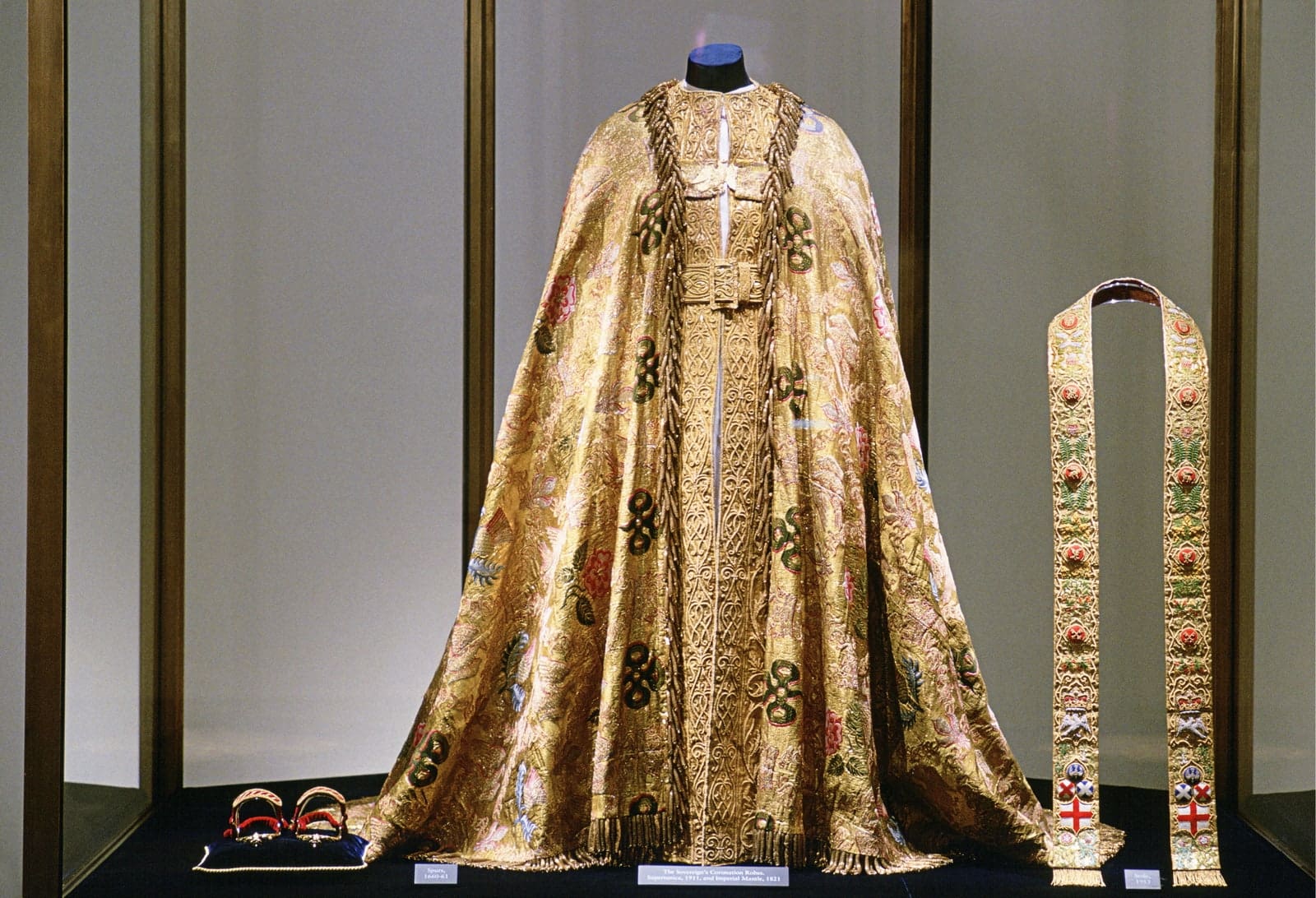
The Imperial Mantle is draped over another spectacular gold coat, the Supertunica, which was made for George V in 1911.
These clothes are heavy—enter the pages
The weight and enormous length of the robes mean the Kings and Queens require assistance to move through the Abbey—not so very unlike the scenes witnessed on the steps of the Met Gala these days. Prince George and six male relations of Queen Camilla will be doing the honors. How they’ll be dressed remains to be seen.
The crowns are complicated
Charles will be crowned with St. Edward’s Crown, made in 1661 and set with 444 precious and fine gemstones. It is symbolically placed on the sovereign’s head by the Archbishop of Canterbury at the moment of coronation and then removed.

The King leaves the Abbey wearing the Imperial State Crown. It was remade for the coronation of George VI in 1937, though closely based on Queen Victoria’s design. It is set with St. Edward’s Sapphire and the Black Prince’s Ruby—a huge uncut stone that is said to have been in Henry V’s helmet at the Battle of Agincourt in 1415.
For Camilla’s coronation, following the King’s, the adapted Queen Mary crown will be placed on her head. It was made for Charles’ German-born great-grandmother, the former Princess Mary of Teck in 1911. It formerly featured the vast Koh-i-Nur diamond, which has a dark and bitterly contested colonial history as one of the spoils of the Victorian British empire in India.
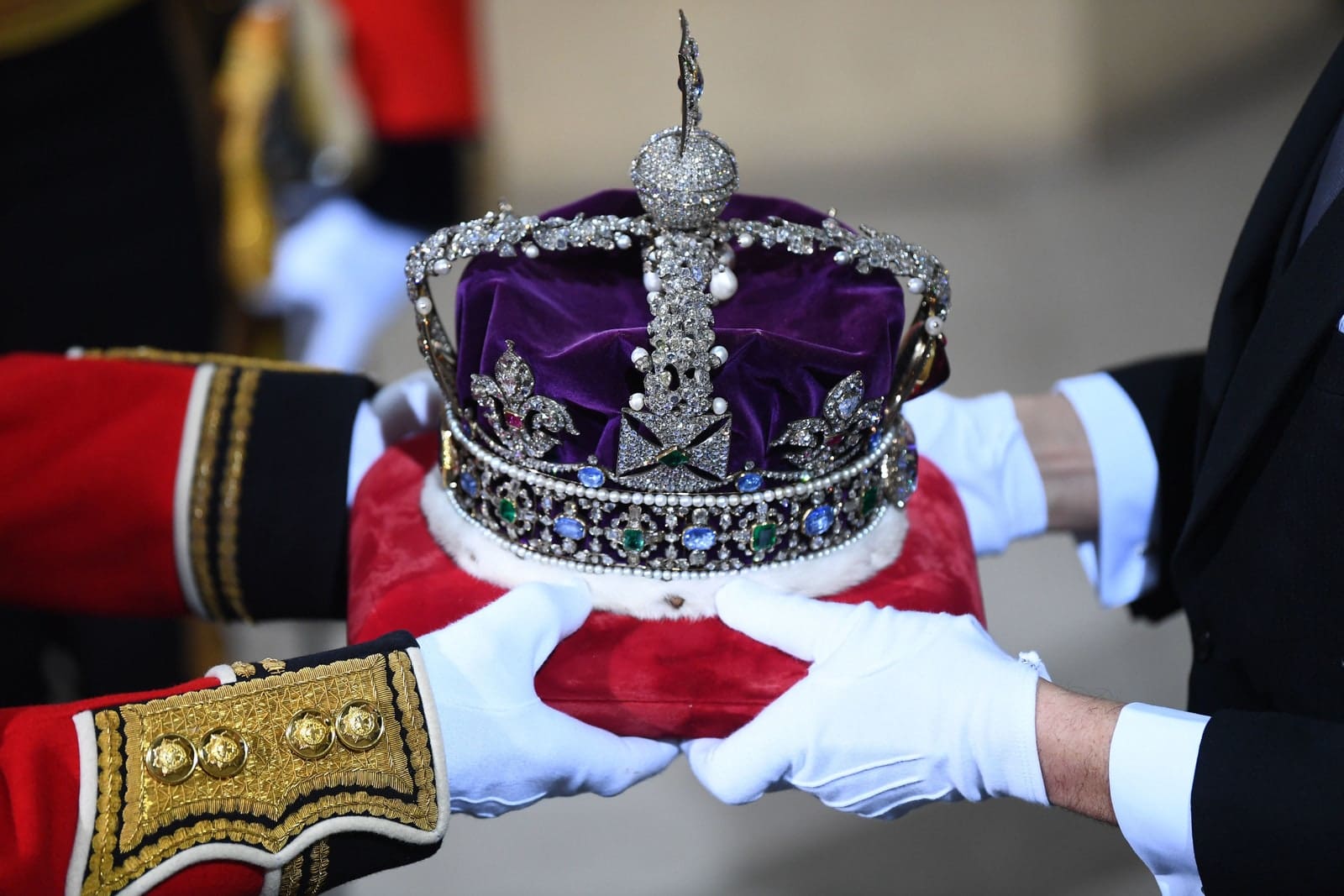
In an attempt to avert that particular controversy, the Koh-i-Nur has been replaced and the crown set with the pieces of Queen Elizabeth’s jewelry called “Granny’s Chips.” Queen Mary had given them to her granddaughter when she was 27. Elizabeth was often seen wearing a huge diamond droplet brooch which has now gone into Camilla’s crown: fragments chipped off the huge Cullinan diamond, officially known as Cullinan III and IV.
Coronation dress code
As a symbol of his wish to modernize the monarchy, Charles III has decreed the general dress code for guests as “day wear.” Queen Camilla, however, has commissioned the British couturier Bruce Oldfield to make her coronation gown. If he sticks to interpreting tradition, it will be a long, white, or silver-gold dress such as Queen Elizabeth wore (hers by Norman Hartnell) to the 1953 coronation, though likely simpler and more streamlined.
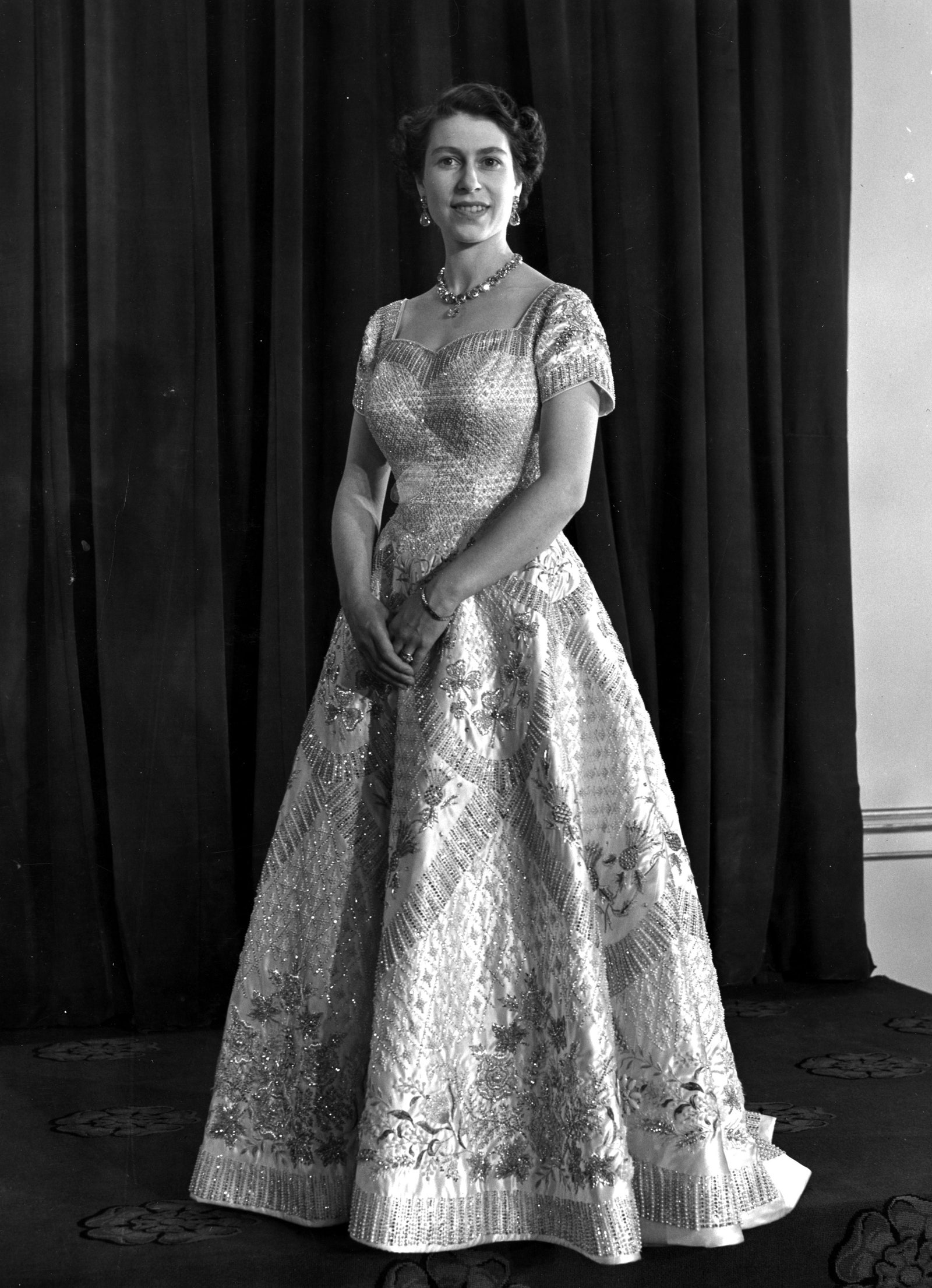

Oldfield has been designing for Camilla for the last 13 years. That, as he pointed out to The Guardian, is “much longer” than he designed for Diana, Princess of Wales, during the years he became a British fashion star.
Princess Anne will ride away
Anne, Princess Royal, is to be wearing the military uniform of Gold Stick in Waiting in her honorary role as colonel of the Life Guards and Blues and Royals, which she’s held since 1998. Her uniform is heavy with gold braid.
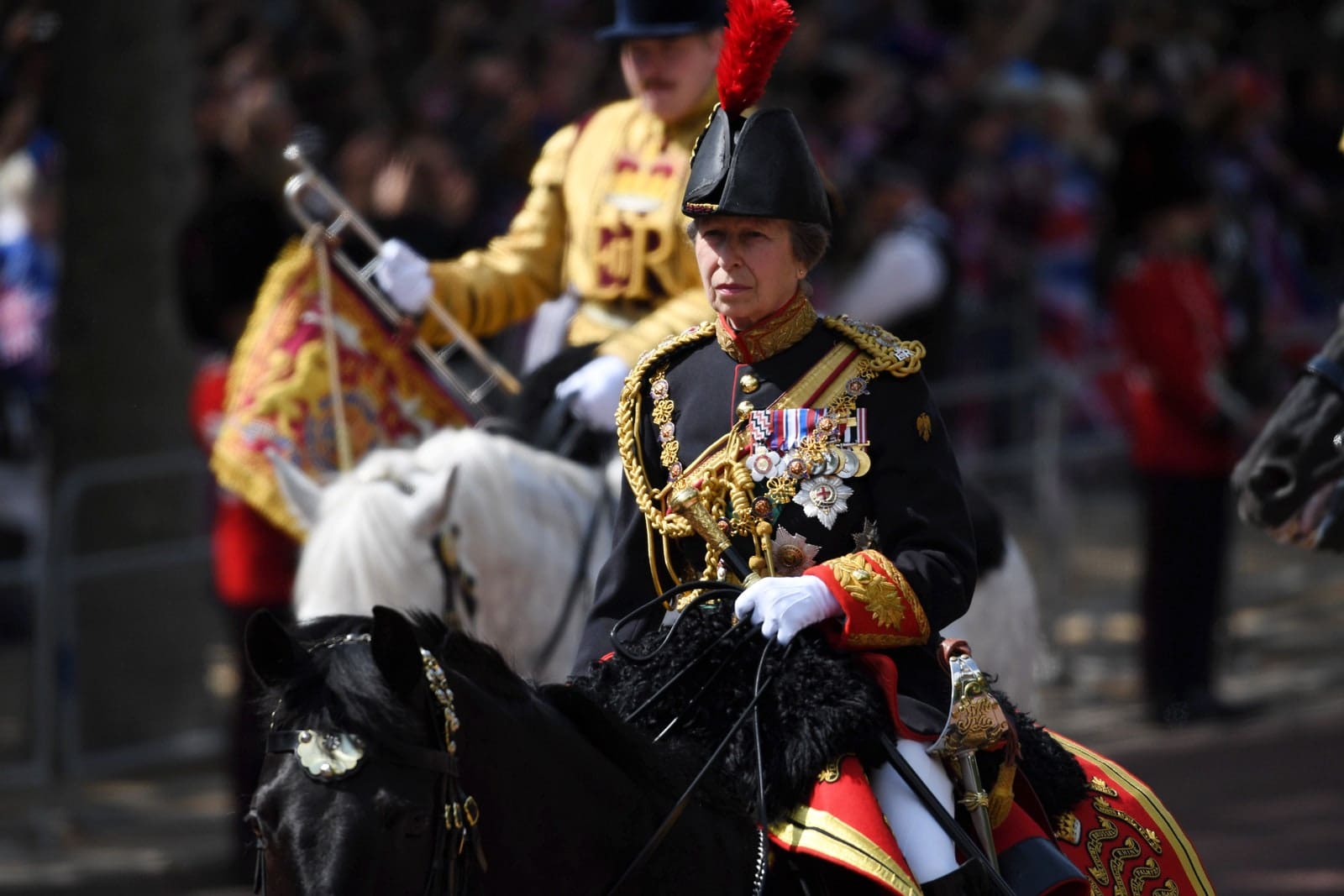
She will ride directly behind the King and Queen’s gold state coach—made 260 years ago—leading 6,000 troops on their way to Buckingham Palace. Symbolic of her role as protector of the King, but also of her standing and service as a wise and stoic daughter and sister.
The fashion community will have a presence at the coronation
King Charles’s long involvement with fashion and textiles traditions, and his encouragement of young people into jobs in fashion-related businesses, has only increased since he started the Prince’s Trust in 1976. It’s now named the Prince’s Foundation, an umbrella for all of his enterprises in education across the creative arts and crafts, architecture, agriculture, science, and well-being.
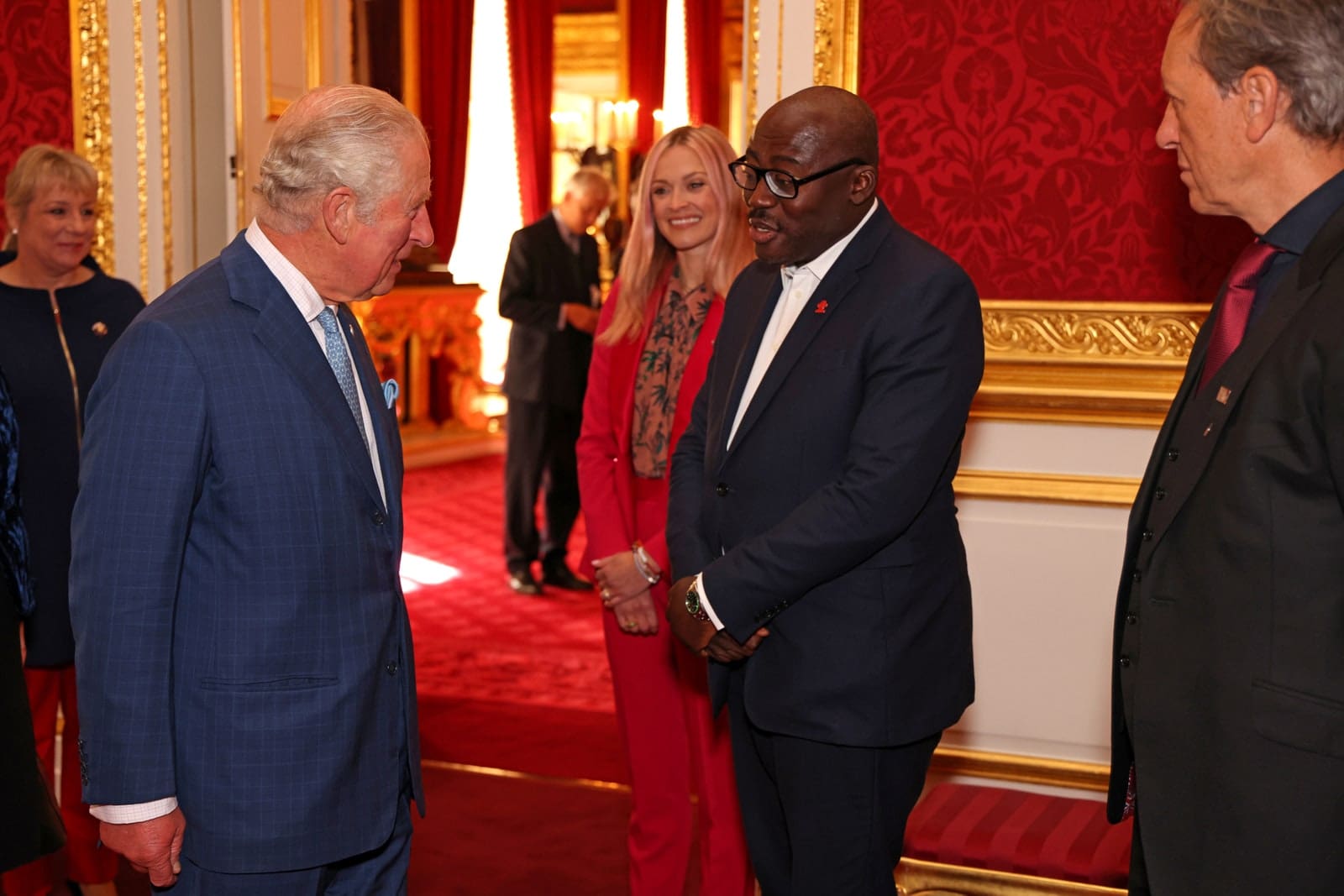
Vogue’s Edward Enninful OBE will be heading up the select list of fashion guests, recognizing his service as an ambassador for the Prince’s Foundation. Charlotte Mensah, the leading British-Ghanaian hair stylist, is also invited, recognizing her success story as a young entrepreneur who set up her business on a Prince’s Trust grant. Nicole Christie, who set up her business as a fashion designer through Charles’s Modern Artisan educational project at Charles’ Dumfries House is invited to represent the King’s commitment to “sustainability and fashion.”
This article was originally published on British Vogue.
